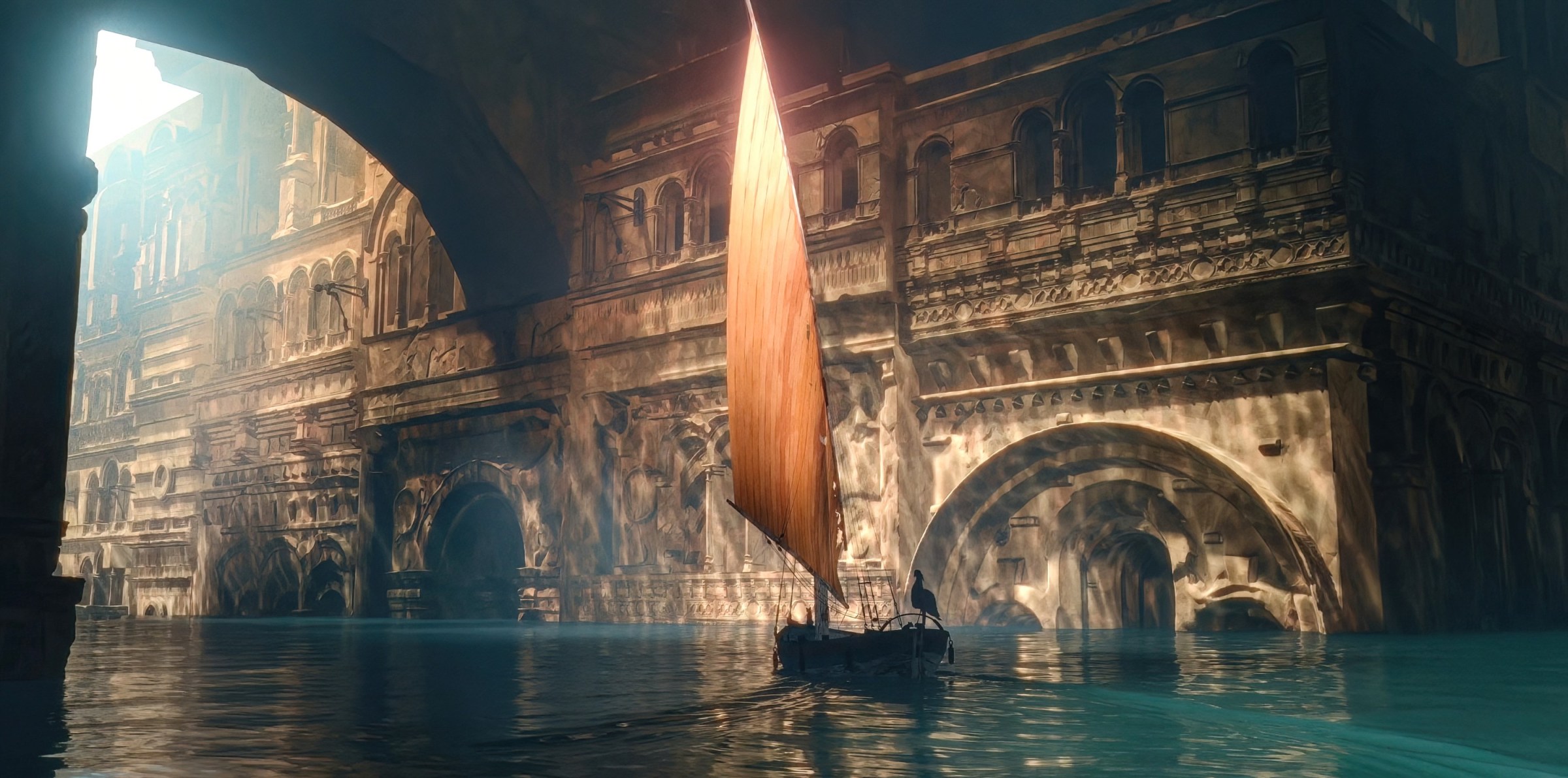The director of Flow wants you to see your cat in his beautiful animated film
In Currentone of the best animated films of 2024, a little black cat navigates a post-apocalyptic world full of rising waters. The feline protagonist flees from threats and hunts fish, speeds through trees and rock formations, balances on the edge of a boat and curls up at the top of the mast – all with such stunning naturalism that I sometimes wondered: Hey, could my cat do that?
The animated animal cast of Current – including a grumpy capybara, an enthusiastic Labrador, a curious lemur and an aloof secretary bird – are not anthropomorphic. For the most part, they communicate and move like animals do, with body language and meows, growls, barks and other animal sounds. When they perform clever, almost human actions, such as steering the rickety sailboat in the right direction, their physical movements are so rooted in animal reality that even their most far-fetched behavior seems possible.
But while the animation is specifically based on real animals, Latvian director Gints Zilbalodis made sure to pull back on the character designs and facial expressions, deliberately not rendering them with too much photorealism.
“I think if you have too much detail in the characters, they can lose their appeal and be less expressive,” he explained to Polygon. “I wanted to prevent that. In most classic hand-drawn films you see backgrounds painted in much more detail, with oil paintings or digital paintings, but the characters are just flat colors. If you don’t add too many details to the characters, I think the audience can project their own experiences onto these gaps and see their own cat in this character. It’s not just any cat from the movie, but it’s their own cat. It makes it more intense and fascinating.”
And there are plenty of intense moments as the water rises. The cat desperately climbs higher and higher, looking for safe ground. It bristles when he meets strangers. He scrambles for support as he climbs aboard a boat, and thrashes his arms as he falls overboard. Those scenes are tight, tense, and absolutely beautiful against the film’s stunning backdrops.
Current‘s story wanders from place to place, through flooded forests and a strange abandoned city where tall pillars loom in the distance. Zilbalodis said he wanted the world to be immersive, yet not tied to real life. This meant that brushstrokes and imperfections were consciously incorporated into the landscape.
“We only put details where it is really necessary,” he said. “And with some backgrounds we try to leave them with as little detail as possible. It’s another way to guide the audience to what they’re watching. That’s part of the style; it’s the textures and colors.”
But one of the most important tools was actually the camera. Inspired by the long takes in Alfonso Cuarón films such as Children of men And Gravityand informed by documentary filmmaking, the recordings are made in Current are designed to put you right in the cat’s head — almost in a way that contradicts the stylized look of the film, Zilbalodis said. The camera is like an active participant in the story.
“It’s not just about observing (the characters) from a distance,” Zilbalodis explained. “It’s a storytelling tool. There are imperfections in the camera. There is movement out of control and sometimes not everything is captured at exactly the right time. It is slightly delayed and is carried away by the wind and water into the elements of the world. Almost like it’s a different character. It’s looking around and sometimes getting distracted by something.”
And there’s always something happening on the screen Current, from the way the animals run around the small boat trying to keep it away from obstacles, to the backgrounds that point out human tracks. The water ripples, alive with fish and other creatures, as it slowly rises, covering trees and houses. All facets come together to portray this world – even if that meant a lot of extra work.
“There are so many characters and so many props and effects and water and just millions and millions of blades of grass, different plants,” Zilbalodis said. “So making adjustments was very slow, even on very powerful computers.”
Current debuts in US theaters in Los Angeles and New York on November 22, before a wide release on December 6.

